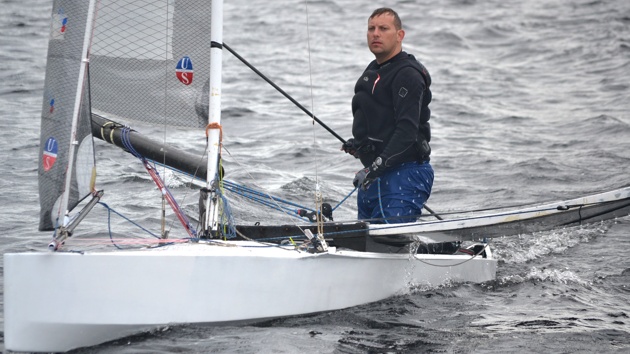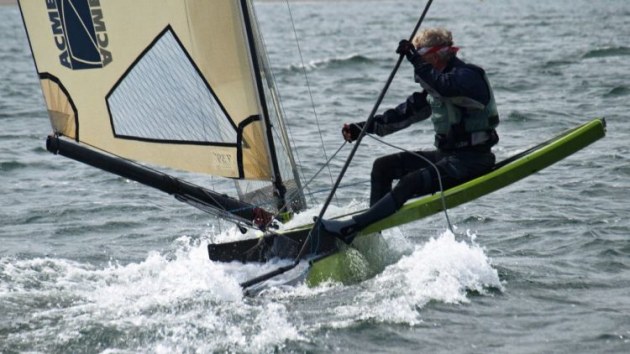Europa Cup 2003
Twenty ICs and six ACs traveled to Gothenburg on the Swedish west coast to compete for the 2003 Europa cup. The event also included the Swedish championships for the national A, B, C, and D canoes, so all in all there were 47 boats racing. The regatta promised good competition, with most of the top UK sailors present in the IC class and 4 British AC sailors, including former triple world champ Robin Wood. Sweden was represented by 8 IC's, including myself sailing Olle Bergqvist's boat. Germany contributed with 6 ICs and 2 ACs, including some younger faces. (The rest of us just pretend we're still in our 20's.)
The racing took place about half a mile outside the club in the inner parts of the Gothenburg archipelago. The water is slightly salty, but otherwise the venue is similar to Sugar island on lake Ontario. One difference is that most trees were cut down during the heydays of Swedish ship building, some 300 years ago. This has some implications for the racing, since the smooth granite islands don't slow down the wind very much and allow sailors to go very close to shore, assuming they know where the shoals are. Some of these island also give good shelter to the current that runs through the racing area.
Even though the wind was on the light side, there was just enough of it to run all 10 races according to schedule. We had three races per day the first two days, followed by two races before lunch on the last two days. The first race on day one was started at the first sign of breeze after an hour long postponement. Hence the first lap and a half saw some major shifts in wind strength and direction. I rounded the weather mark in second place following Jan Stahl from Germany, just ahead of Simon Allen and Mark Goodchild. These positions were maintained until the leeward mark, but changed drastically during a gradual 30 degree shift to the right on the second beat. Being on the left side of the course when this happened, I was less than amused. However, in the end I recovered to a fourth place. Jan Stahl maintained his lead to the finish. After lunch, the wind had increased a little and it was now blowing 6-10 knots. I got a good start and rounded the weather mark in the lead followed closely by Mark Goodchild and John Ellis, but I lost the lead during a wind shift on the third beat and rounded the last weather mark in third place. I managed to pass John on the run, but Mark stayed in the lead and won the second race. The third race was sailed just after the second race. Mark Goodchild took the start and rounded the weather mark just ahead of John Ellis, Simon Allen and myself. I managed to pass them by going low on the first reach, rounding the gybe mark in the lead. Even though my lead was never more than a couple of boat lengths, I managed to maintain it to the finish. John Ellis finished second, Simon Allen third with Colin Brown in fourth place.
Day two saw similar conditions, with a light breeze in the morning building to maybe 8 knots after lunch. All three races were very close and reading the results afterward does not give full credit to the effort involved. The one event that stands out afterwards was sailing into some weed on the second reach of the fifth race while being in the lead and immediately loosing that position and ending up fourth after Mark, Colin and John. The other two races of the day I somehow managed to win. As Mark pointed out during the nice BBQ that evening, this was far from relaxing racing because the top four- five boats had pretty much exactly the same boat speed and no one was ever able to get a comfortable lead. So whenever you were in the lead, there were at least two other boats within a couple of boat lengths breathing down your neck and ready to exploit any mistake you might make.
Day three did not start well for me. I thought I got a decent start at the favored leeward end of the line, but I was kind of trapped between Simon Allen to windward and Robin Wood to leeward (the ACs started together with the ICs, but sailed a windward leeward course). To make matters worse, the left side of the course had a stronger current that turned out to be significant in the light winds. And to make things even worse, I tacked too early to round the weather mark and was pushed down below the lay-line by the current, which forced me to make two additional tacks before I could round the mark. At this point, the one boat length advantage Simon had had over me at the start had stretched out to the whole reach leg, since he was now at the gybe mark. I only managed to pass a few boats and I never got close to the lead during the remainder of that race. The second race of day three (race #8) was better for me. Now more people had noticed the favored leeward end of the line and Simon, Mark, Robin and myself competed for the best position off the line. Mark was a bit too far to weather at the gun and had to go back after an individual recall. In the end it was Simon that got the best start of the IC's, and he rounded the weather mark in the lead followed by myself. Mark somehow managed to recover after his premature start and was not far behind. Until the last 100 meters of the last run, Simon maintained his lead with myself in second and Mark in third place. I managed to find a little extra breeze and got in front of Simon just before the leeward rounding with Mark still in third place. The leeward buoy was very close to an island, and even though I was barely able to stay clear of it on port tack, both Simon and Mark were forced to tack as they sailed in the bad air behind me. At that time, the natural choice for me seemed to be to tack and cover. After 100 meters or so, Mark tacked back and I followed 5 boat lengths to weather, right on the lay-line to the finish. However, that gap was too big and it allowed Mark to get back in shelter from the adverse current a little sooner than myself, so Mark won even though he had to tack to make the finish line. I was second followed by Simon in third. John came in fourth right after Simon, after gaining a significant distance on the final 400 meter weather leg. At this point, I had an unpleasant feeling that my mistake would determine the outcome of the whole regatta, and I was annoyed that I had overlooked the significance of the current in what used to be my home waters.
We spent the afternoon relaxing together with some of the British sailors and their families eating ice-cream and drinking coffee on an island in the archipelago. The Gothenburg bus and tram system also includes passenger ferries that go to the nearest islands where many people live year-around. So for about two bucks, you can go by boat to some very nice beaches and check out the scenery (I am not only talking about cliffs and ocean here).
Before the last day, Mark Goodchild held a one point lead over myself, closely followed by John Ellis and Simon Allen. If we got at least one more race, we would be allowed to throw out the two worst results. Since I already got a ninth and my second worst result was a fourth, I needed to be third or better to improve on my score. Mark's worst result so far was a fifth, so he needed to be fourth or better.
The ninth race got off to a really bad start for myself. In the light winds, I didn't get going early enough before the gun and was caught in bad air behind Mark. Simon did the best start close to the committee boat and immediately tacked to port to get to the better wind on the right side of the course. After a while I also attempted to tack to port, but was caught in a vacuum between a German and a Swede all the way up to the lay-line. Once you get behind it is not easy to recover because there are boats everywhere and no pressure to be found anywhere. So I rounded the weather mark well behind the leaders. This is when I got lucky (again). The leaders ran out of wind on the first reach and about ten boats ended up rounding the gybe mark simultaneously in no wind. The inner boat at the mark was kind enough to leave a big gap between himself and the mark. I had found some new wind by gybing to port after the weather mark and was now approaching the gybe mark with some speed. I saw the gap at the mark, went through it and suddenly I was in third place! And even more importantly, Mark was behind me! Half-way down the second reach, the wind died again and came back from almost the opposite direction, turning the reach into a close-hauled beat on starboard tack. After rounding what used to be the leeward mark, the second beat had turned into a very light run where I sat on the inside of Mark on a very slow starboard gybe down the course. When we were approaching the weather mark (now the leeward mark) on port, another boat was just ahead of us on starboard and forced both me and Mark to gybe before rounding. I was able to blow through the other boat's lee on the reach that had turned into a close- hauled port beat. Mark was not as fortunate and ended up tacking to get some clean air. So now I was third again with Mark in sixth place. The positions were maintained up to and after we tacked around the former gybe mark, but the wind went very light again on the final starboard beat to the former leeward mark. On this leg, two Swedes drifted past me and I just managed to stay ahead of Mark. At this point, the course was shortened and we only had one short run down to the finish line. I managed to find a little extra wind on the way down and passed the two Swedes who had passed me on the previous leg, thus reclaiming my third place. Many boats finished almost simultaneously and Mark, who was about one boat length behind me, finished sixth. With one race to go, Mark and I were at exactly the same score with the same number of bullets. Again, Mark needed to improve on his fifth place from day one and I needed to do better than a fourth to reduce my score. After an half-an-hour postponement a little breeze appeared and the race committee decided to start the last race. After a good start at the leeward end of the line, it looked like I was on the lay-line to the windward mark. I attempted to tack in front of everybody, but the wind was too light for a quick tack and I ended up stopping in the tack while trying to pop my stiff battens. So instead of beeing in front, I ended up going behind most starboard boats. Then the wind died on the right side of the course and turned 20 degrees right before it came back. So I was way back in the pack at the windward mark. The only positive thing (for me) was that Mark was not doing much better. After drifting down to the leeward mark, the course was shortened to one lap. Neither Mark nor I managed to recover from our poor first beats and Mark finished sixth with myself in ninth position. Harald Merseburg won the race. So the Europa cup was determined in a rather anti-climatic way, since Mark was forced to throw out both results of the last day and had to count his fifth place from day one, while I could count my third place from the ninth race, which gave me a one point advantage in the final result. John ended up third overall, with Simon in fourth and Colin in fifth place.
The AC class was completely dominated by Robin Wood who won almost all the races. He often started well and in many races he rounded the weather mark just ahead of the first IC, despite all the extra gear an AC has to carry upwind. As expected, the ACs were significantly faster than the ICs downwind. A friend of mine timed the top IC and AC on a run in about 6-8 knots of wind and the AC turned out to be twice as fast from the weather to the leeward buoy. In more breeze the AC probably has an even bigger advantage, since it then can plane cleanly, while the IC will be running in displacement mode until it gets really breezy. Having both classes start together worked very well, but a couple of times the top ICs ended up sailing in bad air behind the last couple of ACs on the second beat, which disturbed the tactics a little (or made it more interesting).
The Gothenburg canoe club did an excellent job repeating the success of the 1997 Europa cup. On shore, many club members volunteered their time to prepare meals, work in the bar, administer the regatta, or just be hospitable to all the competitors and their families. Even the weather cooperated, and after sailing both the 1997 and 2003 Europa cups in Gothenburg and the 1999 Worlds in Nynashamn, some of the British sailors now believe that it is always warm and sunny in Sweden!
Anders Petersson, usually sailing SWE 105 in San Francisco
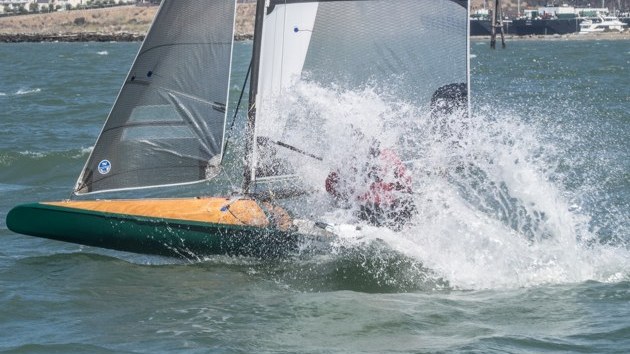
Ulrike_veerkamp.jpg)

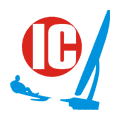

Ulrike_veerkamp.jpg)

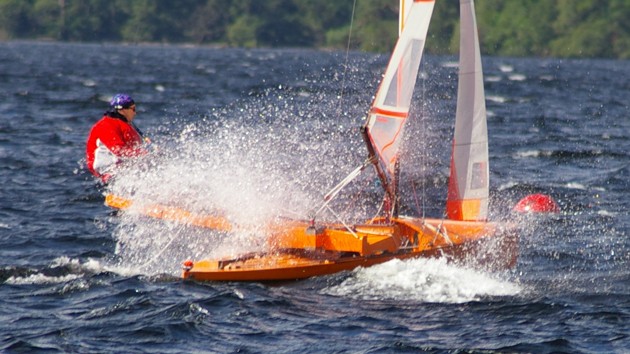
Ulrike_veerkamp.jpg)

